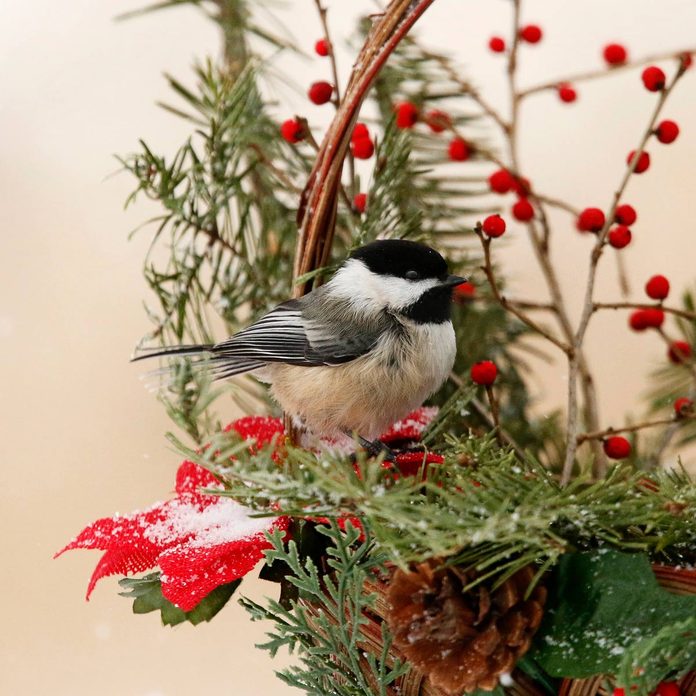
Black-Capped Chickadee
A black-capped chickadee posed on a festive basket that I made last winter. —Respah Mitchell of Exeter, Maine
Attract with: willow, alder and birch trees for nesting
You’ll be seriously impressed with these seriously cool birdhouses.
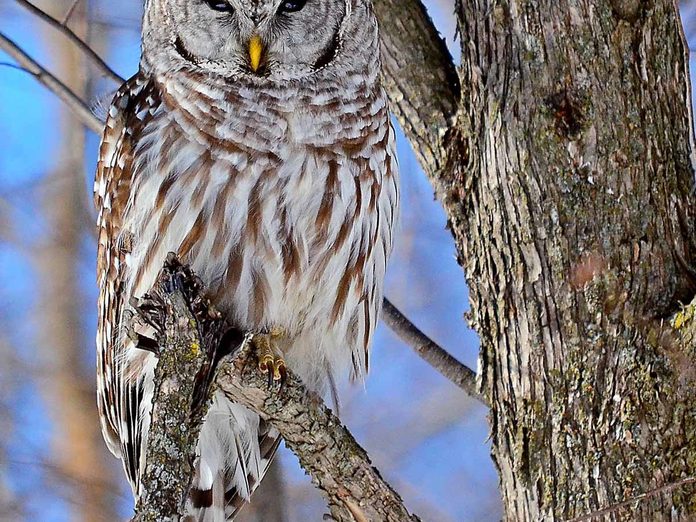
Barred Owl
This barred owl came to our yard for a few days last winter and hunted some of the red squirrels. I was able to get kind of close to it as it perched in this tree. Unfortunately, two days after I captured this shot, I found the bird next to a snowbank. I feel this photo is something of a memorial to it. —Laurie Painter of Silver Cliff, Wisconsin
Attract with: nest boxes in mature, dense trees
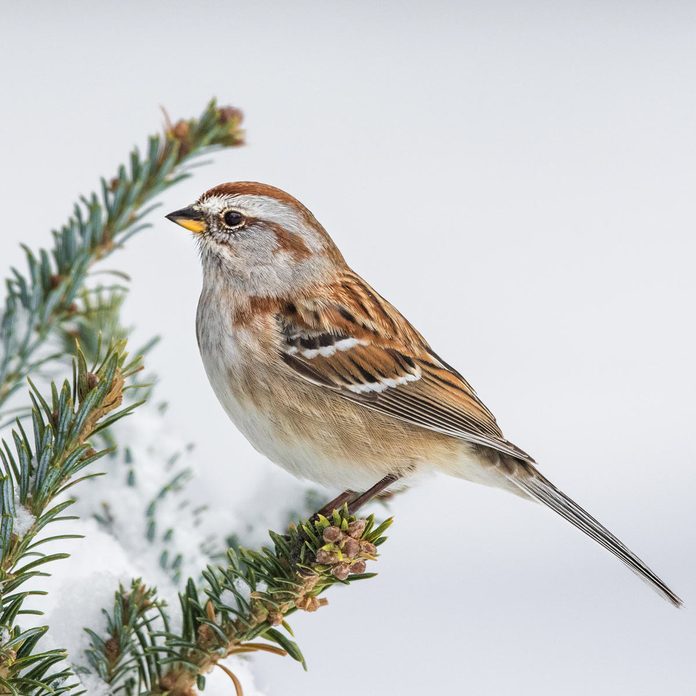
American Tree Sparrow
Some days, the winter skies are drab and full of snow clouds. Yet it’s on those dark days that mellow colors become rich, especially when there is no light to cause contrast as on sunny days. One dark day, this American tree sparrow momentarily perched on a fir branch. I set my camera to an aperture that allowed for a lot of light to enter, so it blurred out the background. I think the image has the feel of a painting. —Laurie Dirkx of Ontario, New York
Attract with: hulled and black-oil sunflower seeds, thistle, millet, peanut hearts.
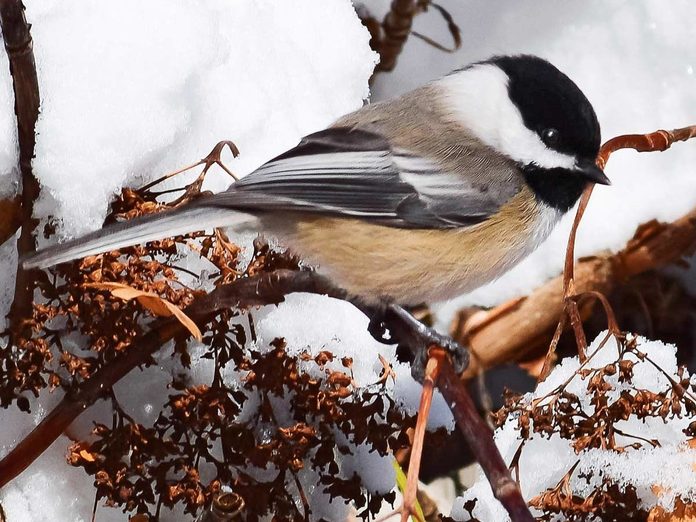
Black-Capped Chickadee
This black-capped chickadee and its friends stopped by my backyard the day after a January snowstorm. —Karen Retter of Jerome, Michigan
Attract with: suet, sunflower seeds, peanuts
One of the most annoying things about bird feeders is squirrels but these attempts of squirrels to reach bird seed are hilarious.
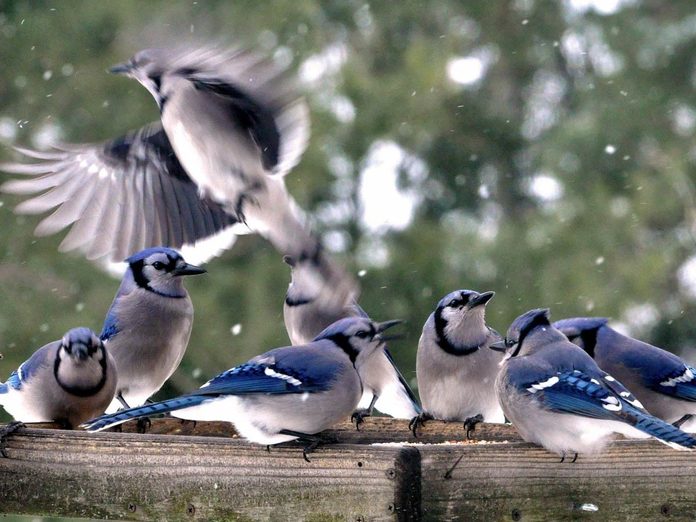
Blue Jay
I was astounded when all of these blue jays arrived on the feeder at my property in Adams, Wisconsin. It was the middle of winter, and just as we were growing tired of white, this huge flock landed on the feeder, the ground and the trees. It was an overload of blue. I grabbed my Nikon and took this shot. —Tammy Kay of Richmond, Illinois
Attract with: peanuts, suet, sunflower seeds, fruit
Find the perfect winter bird feeder for your winter birds after looking at these 14 amazing winter bird feeders.
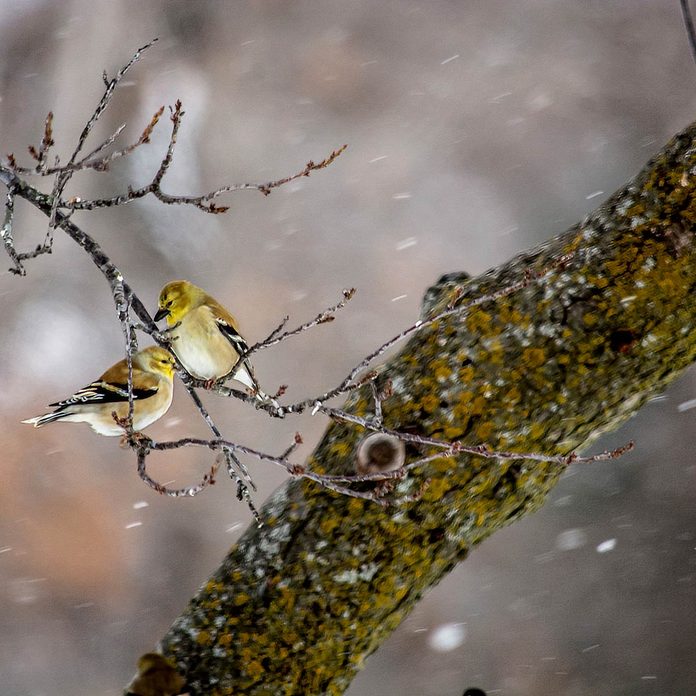
American Goldfinch
Flurries had just started to fall. It was a gentle snow, perfect for photos. These goldfinches cozied up while they waited for a turn at my feeder. —Lisa Hostetter of Waverly, Missouri
Attract with: black-oil sunflower seeds and thistle (nyjer) in any type of feeder.
Make sure you’re cleaning your bird bath correctly so you’re not inviting other pests.
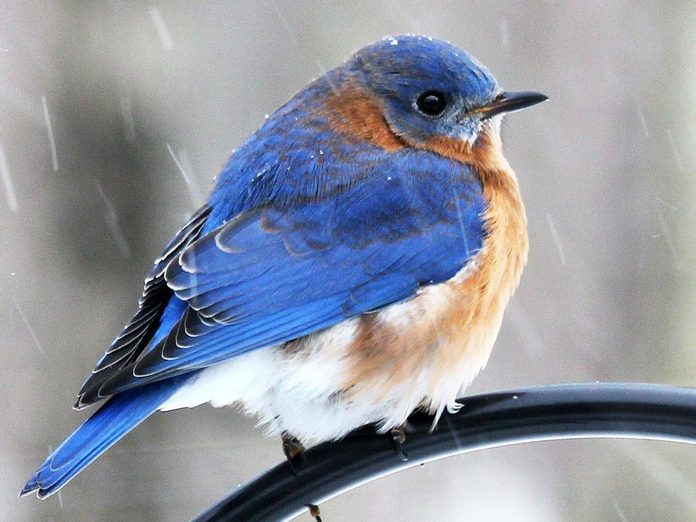
Eastern Bluebird
I captured this photo of a male eastern bluebird at the start of a winter storm. Cold weather creates some challenges for a bird’s survival, so I always do my best to provide the necessities—food, water and shelter. —Robert Merrifield of Amston, Connecticut
Attract with: mealworms or fruit in a platform feeder.
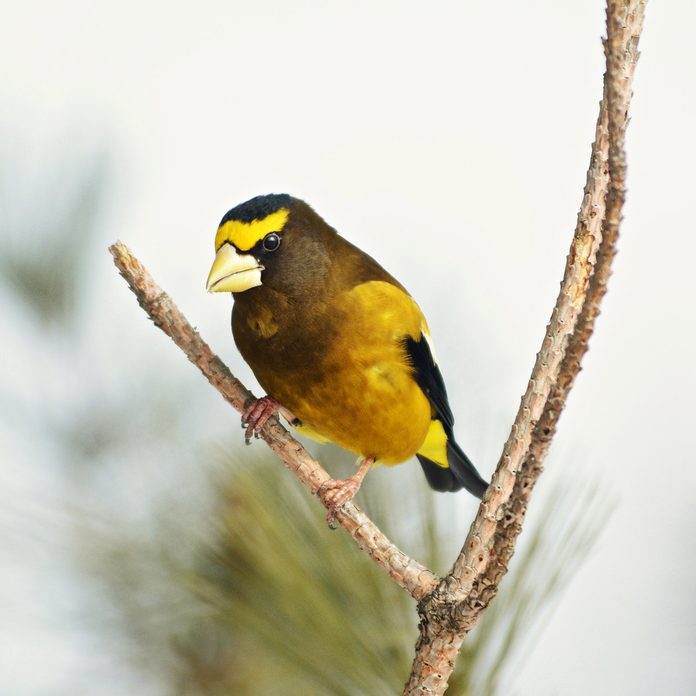
Evening Grosbeak
The evening grosbeak is one of the most dramatic winter finches to come from Canada to northeastern Minnesota’s coniferous forests. These colorful grosbeaks are a favorite at my feeders. Large flocks of them can be seen at the Sax-Zim Bog, which is north and west of Duluth. This species seems to have spread eastward about a century ago as box elder trees and other winter food sources became more plentiful. —Donald Kaddatz of Mora, Minnesota
Attract with: black-oil sunflower seeds in tube, hopper or platform feeders
Find out the difference between striped and black oil sunflower seeds.
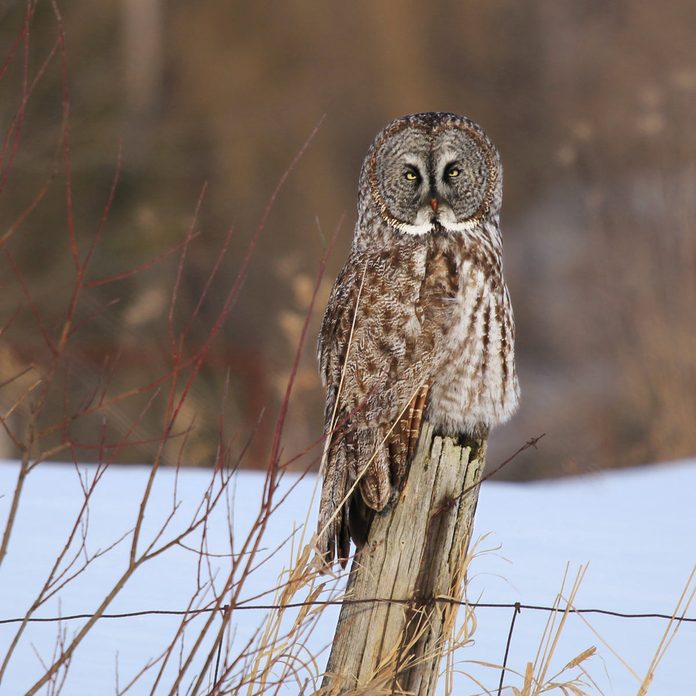
Great Gray Owl
One morning, I heard crows cawing like crazy in my front yard. Knowing it meant a hawk or an owl was around, I ran outside in my housecoat and winter boots. Sure enough, a huge great gray owl flew across my driveway and landed on a fence post near the side of the road. I sat in a snowbank and took photos of it while it preened itself and stared right back at me. I love the intensity of its stare and the gorgeous patterns on its feathers. —Leslie Abram of Codrington, Ontario
Attract with: nest platforms in interior forests.
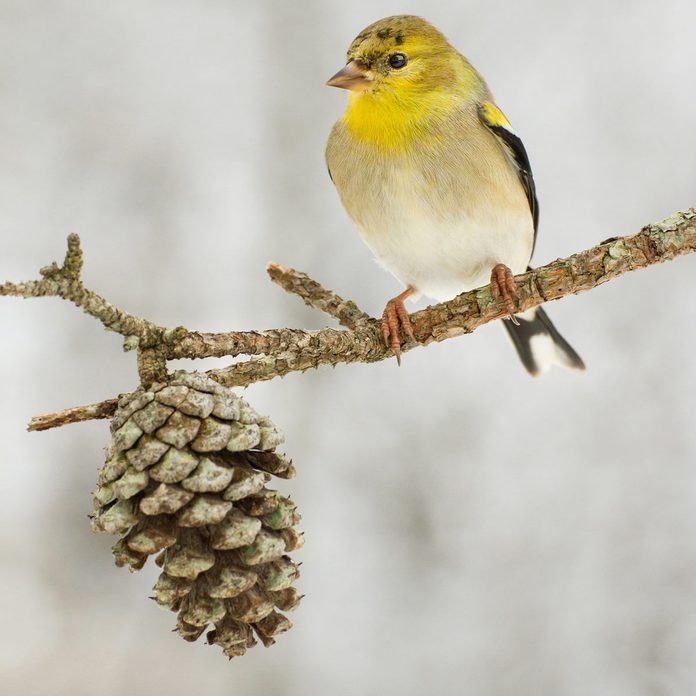
American Goldfinch
During the chilly months, American goldfinches travel in small flocks and dart around bird feeders. They also look for small seeds inside thistles, asters and grasses. It’s fascinating to watch a male goldfinch transform from bright yellow to drab brown each year. —Matthew Cuda of Tobacoville, North Carolina
Attract with: native thistle and milkweed plants
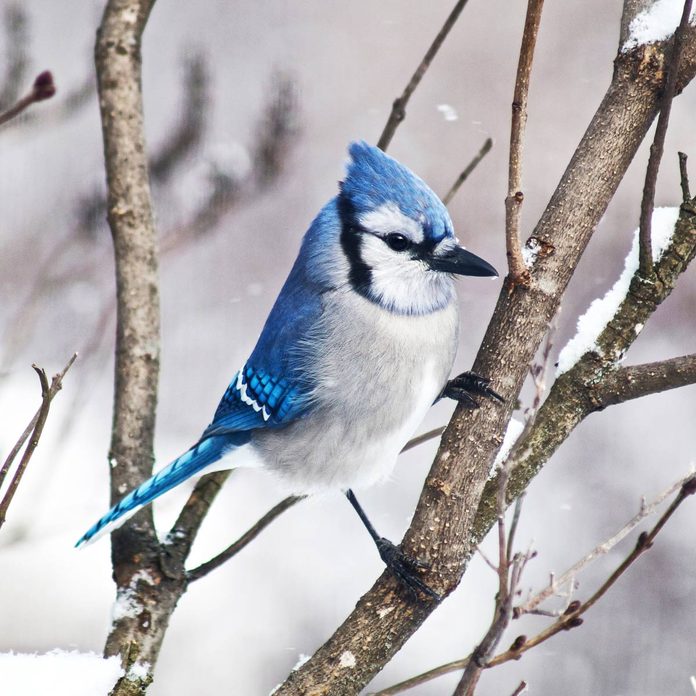
Blue Jay
Brilliantly colored blue jays are some of my favorite winter birds. This particular one looks like it’s trying to show off and say, “I’m going to pretend I don’t see you taking my picture, but here’s my good side.” —Noelle Sippel of Webster, New York
Attract with: oak trees and birdbaths
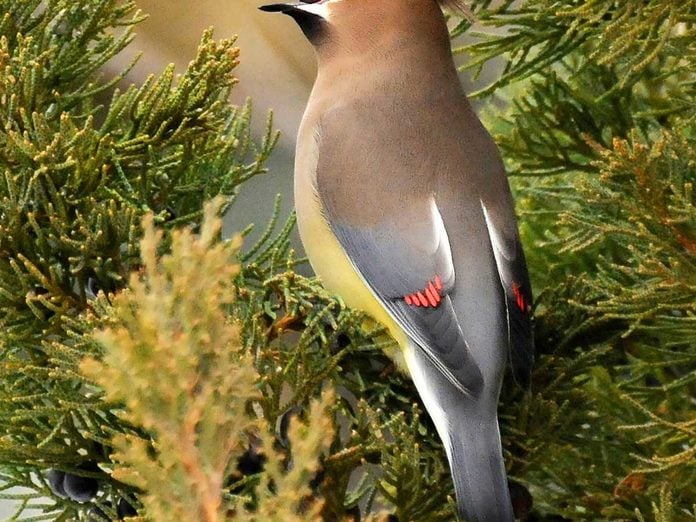
Cedar Waxwing
I watched this cedar waxwing munch on some berries on a cold December day at Frederik Meijer Gardens in Grand Rapids, Michigan. —Angela Rattinger of Fruitport, Michigan
Attract with: native, fruit-producing trees and shrubs, like serviceberry, juniper, hawthorn and winterberry
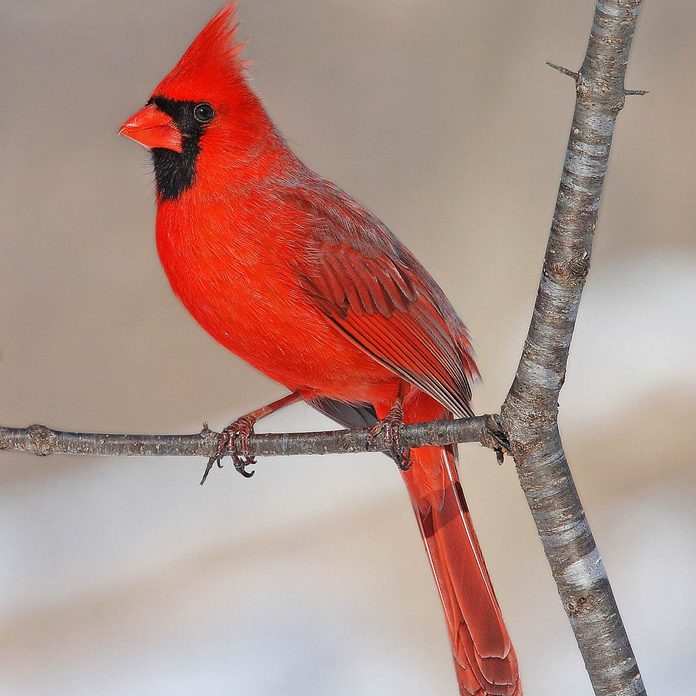
Northern Cardinal
I took this photo of a cardinal while I was in a blind at Camden State Park in southwest Minnesota. I learned to mimic the cardinal call, and within minutes of me whistling, they came and landed near the black-oil sunflower seeds I put out. —Jon Wood of Marshall, Minnesota
Attract with: sunflower seeds, safflower, cracked corn, peanut hearts
Find out which wildflowers do well in the suburbs to create a more colorful environ.
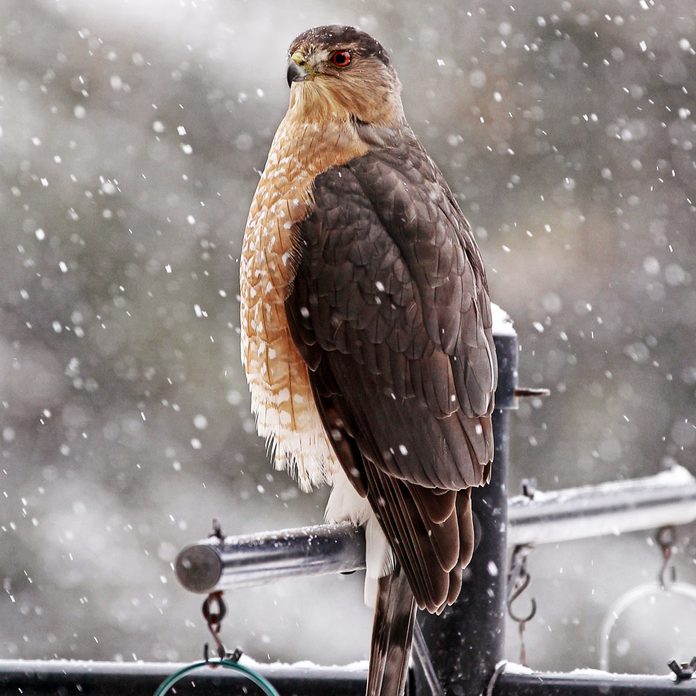
Cooper’s Hawk
A Cooper’s hawk stopped by our bird feeder last winter. All of the birds, squirrels and chipmunks quickly scattered. —Rodger Boehm of Winnetka, Illinois
Attract with: tree-filled habitats, forest edges
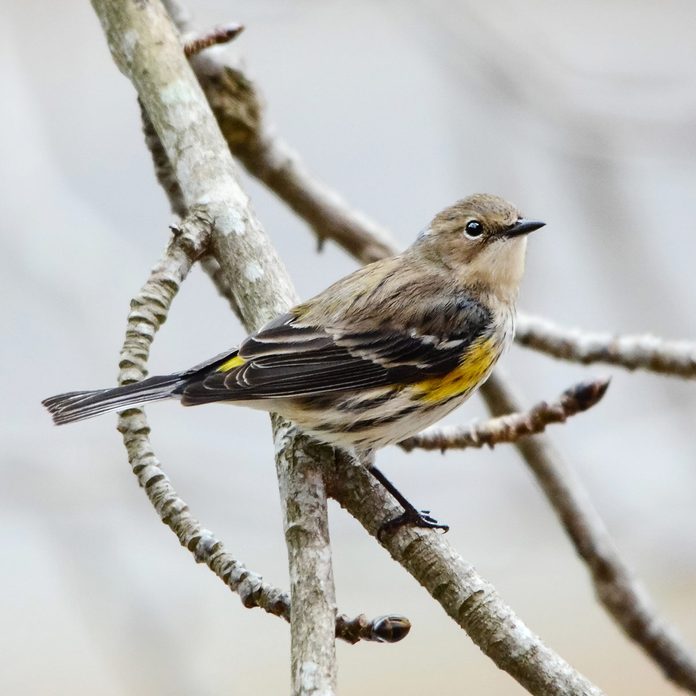
Yellow-Rumped Warbler
This is one of my favorite photographs of a yellow-rumped warbler. It was winter and there were no leaves on my trees. The bird hopped from branch to branch, posing for me before it flew away. —Betsy Moseley of Zellwood, Florida
Attract with: bayberry, Virginia creeper and other native fruiting shrubs and vines
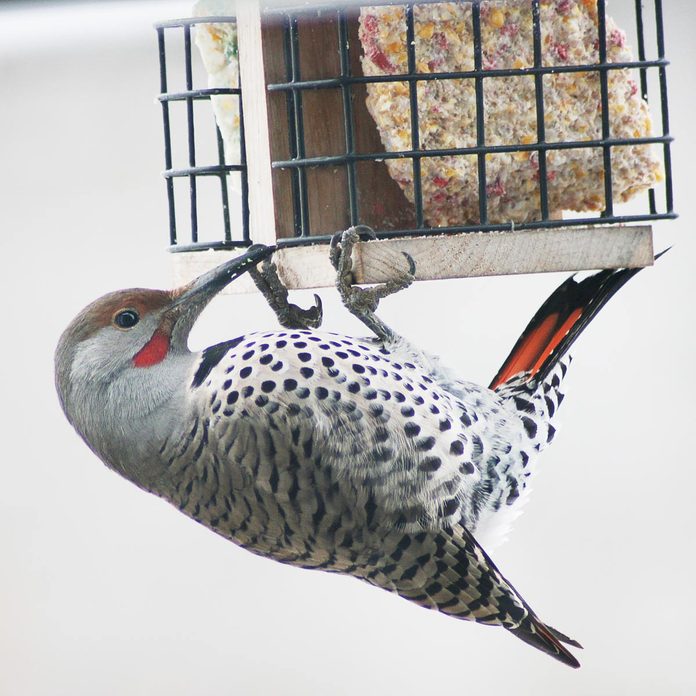
Flicker
We love feeding and watching birds year-round at our home. Each winter, we are lucky to have the most colorful flickers show up to gobble down the suet. —Karen Osadchey of Ridby, Idaho
Attract with: suet, safflower, peanuts, cracked corn
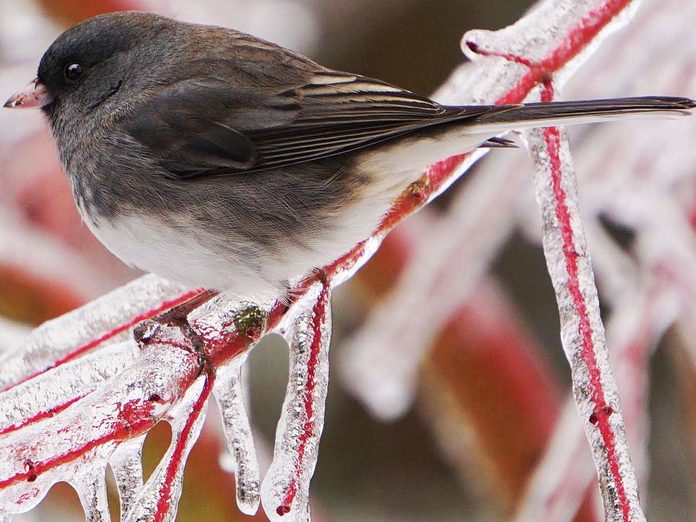
Dark-Eyed Junco
I see dark-eyed juncos almost daily in my backyard. Although I know they can be found on much of the continent, it seems as if they are all right here in North Carolina! The juncos mostly feed on the ground, but occasionally they fly to the feeders or use my little birdbath. I think they’re adorable! —Kimberly Miskiewicz of Raleigh, North Carolina
Attract with: black-oil sunflower seeds, peanut hearts, cracked corn, thistle, safflower
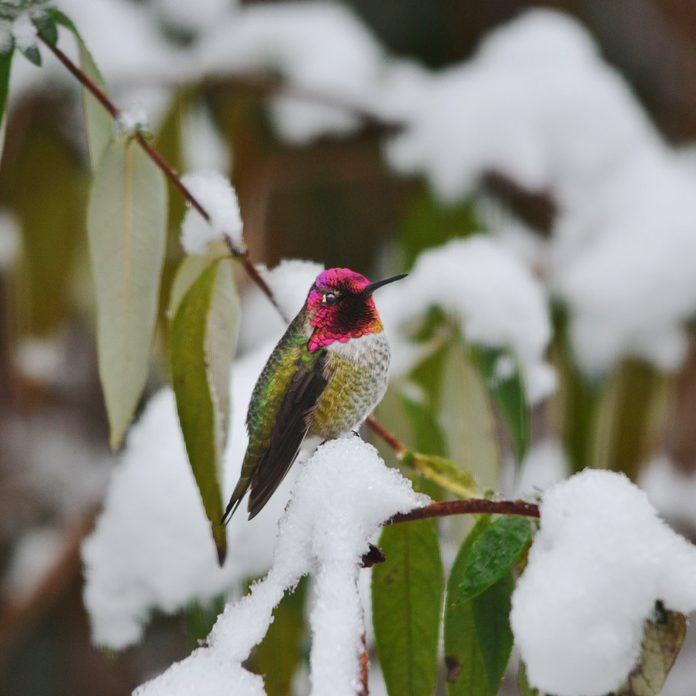
Anna’s Hummingbird
An Anna’s hummingbird spends winters in my yard. One day, I sat at the window waiting for the bird to light on the snow-covered butterfly bush. Eventually, the beautiful winter jewel obliged. —Kristi Gruel of Snohomish, Washington
Attract with: a mix of one part sugar to four parts water
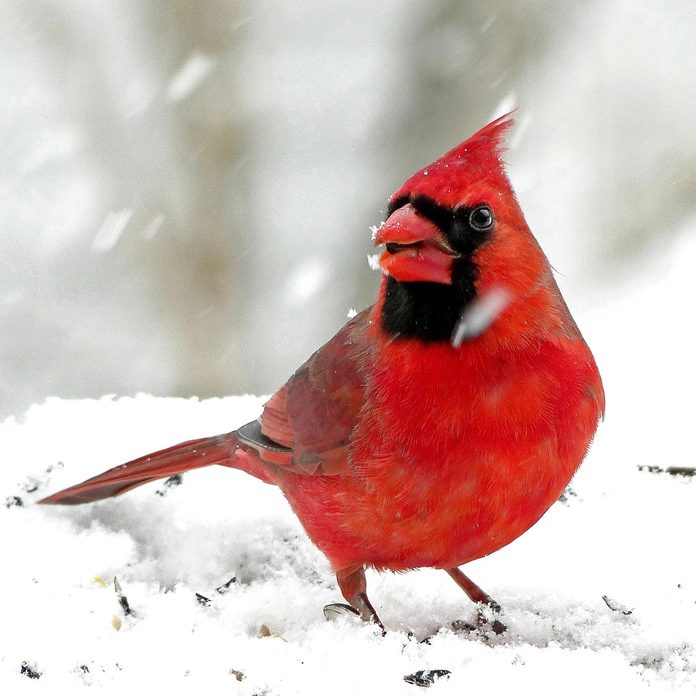
Northern Cardinal
Many birds come to our feeders, but it’s always a thrill when a cardinal shows up. Mr. Cardinal certainly adds a bit of fire to a cold day! —Roger Hart of Lenox, Massachusetts
Attract with: backyard undergrowth and thickets for nesting
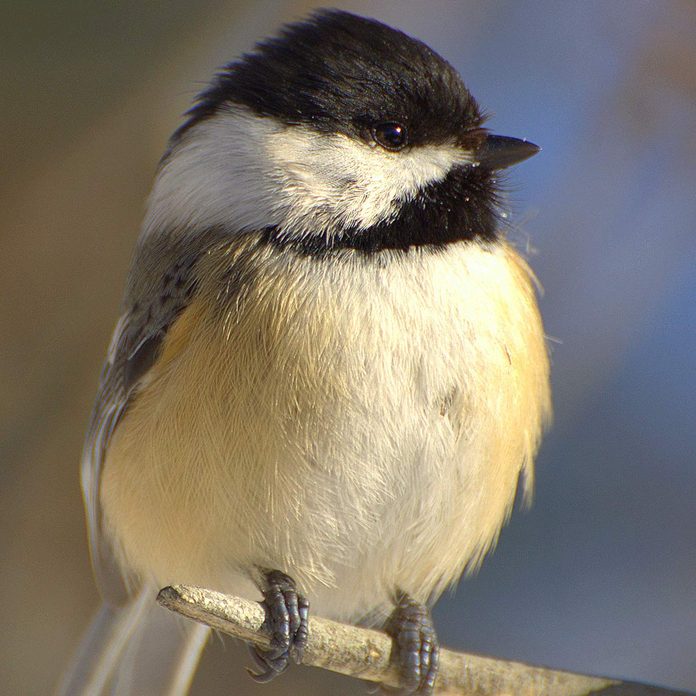
Black-Capped Chickadee
I had been trying for a long time to get a nice picture of a chickadee—they never sit still for too long. One cold, beautiful day I stood under a tree and waited for a chickadee to come close enough. I love how sweet these birds look. —Michelle Nyss of Milwaukee, Wisconsin
Attract with: hanging feeders and window feeders